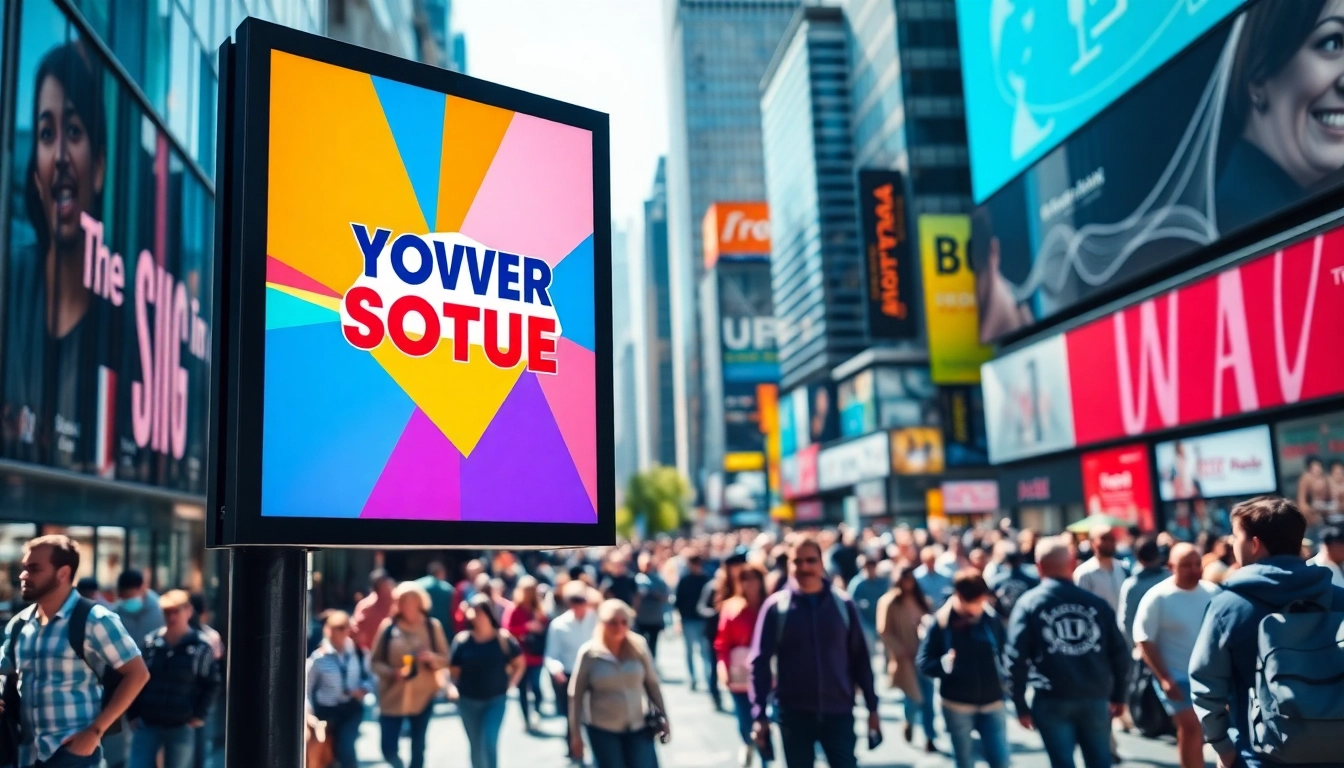Understanding Advertisement Design
Defining Advertisement Design and Its Importance
Advertisement design is a critical aspect of marketing that focuses on the visual and textual presentation of promotional materials intended to convey a message and persuade an audience. This field intertwines creative elements with strategic communication, aiming to grab attention and elicit responses from potential customers. In an age where consumers are bombarded with a myriad of media daily, the importance of effective advertisement design has never been higher. It serves as the bridge between a brand and its audience, enhancing visibility and engagement.
A well-executed advertisement design not only captures attention but also communicates the core message clearly and effectively. It helps in establishing a brand’s identity, fostering emotional connections with consumers, and driving purchasing decisions. In essence, advertisement design is not just about aesthetics; it serves as a tool for driving business success.
Key Elements of Effective Advertisement Design
The cornerstone of successful advertisement design lies in understanding its key elements. These elements include:
- Target Audience Understanding: Knowing who you are designing for is crucial. Tailoring design elements to meet the needs, preferences, and behaviors of your target demographic enhances the design’s effectiveness.
- Visual Appeal: The choice of colors, images, and graphics must be appealing yet aligned with the brand identity. Effective use of imagery can evoke emotions and grab attention.
- Clear Messaging: The text must be concise and compelling, delivering the core message quickly. Avoiding clutter helps ensure that the viewer can easily understand the advertisement’s offer.
- Call to Action: Every advertisement should include a clear call to action that guides the audience towards the next steps, whether it’s visiting a website, making a purchase, or signing up for a newsletter.
Trends Shaping Advertisement Design Today
As technology evolves, so do the trends in advertisement design. Some current trends include:
- Minimalism: A trend that emphasizes simplicity and functionality, minimalism in advertisement design helps communicate messages without overwhelming the audience.
- Video Content: With the rise of social media, video advertisements have become increasingly popular, allowing for dynamic storytelling and better engagement.
- Personalization: Tailoring advertisements to specific user data can significantly enhance their effectiveness, making the target audience feel understood and valued.
- Sustainability: Ethical considerations in design, such as using eco-friendly materials and promoting sustainable practices, resonate well with contemporary consumers.
Core Principles of Advertisement Design
Visual Hierarchy in Advertisement Design
Visual hierarchy refers to the arrangement of design elements in a way that clearly indicates the importance of information. By utilizing size, color, contrast, and placement strategically, designers can guide viewers through the advertisement effectively. For instance, larger fonts can be used for headlines, while supporting details can be in smaller text. Effective visual hierarchy enhances readability and retention of key messages.
Color Theory and Its Role in Advertisement Design
Color plays a pivotal role in advertisement design, as it has the power to influence emotions and behaviors. Understanding color theory can assist designers in selecting palettes that align with the brand’s message. For example, blue is often associated with trust and professionalism, which is why it is frequently used in financial services advertising. Additionally, the use of contrasting colors can draw attention to specific elements such as calls to action.
Choosing Typography for Advertisement Design
Typography is another crucial element of advertisement design that impacts readability and brand perception. The choice between serif and sans-serif fonts can convey different brand personalities; for example, serif fonts might suggest tradition and reliability, whereas sans-serif fonts can feel modern and friendly. It is essential to choose fonts that complement the overall design while ensuring legibility across various platforms and sizes.
Techniques for Crafting Compelling Advertisement Design
Effective Use of Imagery in Advertisement Design
Imagery plays a vital role in capturing attention and conveying messages in advertisements. High-quality images can evoke emotional responses and tell stories that resonate with viewers. When selecting imagery, it’s important to consider the brand’s values and the emotions the advertisement aims to inspire. Additionally, context is critical—images should feel relevant to the accompanying text and overall message.
Incorporating Brand Identity into Advertisement Design
A strong brand identity is paramount for effective advertisement design. This includes consistent use of logos, colors, and design styles that reflect the brand’s voice. Ensuring that an advertisement aligns with a brand’s overall aesthetic not only fosters brand recognition but also strengthens the relationship with consumers who identify with that brand. Cohesion between advertisements across different platforms creates a unified brand image that consumers can trust.
Balancing Text and Visuals in Advertisement Design
Finding the right balance between text and visuals is crucial for maintaining viewer interest and effectively communicating the message. Too much text can overwhelm, while too few words can lead to confusion about the advertisement’s intent. Striking this balance involves placing emphasis on critical points through visual cues while ensuring that the text supports the imagery instead of competing against it.
Measuring the Success of Advertisement Design
Key Performance Indicators for Advertisement Design
Measuring the effectiveness of advertisement design requires focusing on specific key performance indicators (KPIs). These may include metrics such as click-through rates (CTR), conversion rates, impressions, engagement rates, and return on investment (ROI). By analyzing these metrics, marketers can assess how well an advertisement performs and identify areas needing improvement.
Analyzing Audience Engagement with Advertisement Design
Understanding how the target audience interacts with advertisements can provide valuable insights. Utilizing tools like heat maps can help visualize where viewers focus their attention, while feedback through comments and shares on social media can indicate engagement levels. This data is essential for refining future advertisement designs to better align with audience preferences and behaviors.
Iterating Based on Feedback in Advertisement Design
The design process should be cyclical and responsive to feedback. Regularly seeking inputs from the target audience or conducting A/B testing can help identify which elements work effectively and which do not. This iterative approach promotes continuous improvement in advertisement design, ensuring it remains effective and relevant in an ever-changing market.
Future Directions in Advertisement Design
Emerging Technologies Influencing Advertisement Design
The landscape of advertisement design is rapidly changing due to emerging technologies. Innovations such as augmented reality (AR) and virtual reality (VR) provide unique opportunities for immersive advertising experiences. These technologies allow consumers to interact with advertisements in ways that were previously unimaginable, enhancing engagement and driving deeper emotional connections with the brand.
Sustainability and Ethical Considerations in Advertisement Design
As awareness of environmental issues grows, sustainability has become a significant consideration in advertisement design. Designers are increasingly tasked with creating advertisements that not only capture attention but do so in an environmentally responsible manner. This includes using sustainable materials and promoting eco-friendly practices within the design process.
Preparing for Changes in Advertisement Design Trends
Staying ahead of changes in advertisement design trends requires ongoing education and adaptation. Designers should keep abreast of industry developments, adopting new tools and methods that enhance creativity and efficiency. Networking with professionals in the field, attending workshops, and engaging with educational resources will help designers remain competitive and innovative in their approaches.



